Resume Templates
Resume samples

Create and edit your resume online
Generate compelling resumes with our AI resume builder and secure employment quickly.
Write a cover letter

Cover Letter Examples
Cover Letter Samples

Create and edit your cover letter
Use our user-friendly tool to create the perfect cover letter.
Featured articles
- How to Write a Motivation Letter With Examples
- How to Write a Resume in 2024 That Gets Results
- Teamwork Skills on Your Resume: List and Examples
- What Are the Best Colors for Your Resume?
Latests articles
- How To Add a Promotion on LinkedIn: Steps and Example
- The Highest Paying Blue-Collar Jobs Offer Stability, While Nearly 300,000 Layoffs Are Blamed on AI
- How To Prepare Your Resume for a Promotion in 2024
- The Essential Guide To Giving Two Weeks’ Notice in 2024

Dive Into Expert Guides to Enhance your Resume

How to Send a Cover Letter Email

You only get one chance to make a first impression which is why your cover letter email is so important. Emailing a cover letter is your chance to show why you’re the best candidate for the job and to demonstrate that you’re a professional who is serious about the application.
The email cover letter should provide information on your expertise, such as your qualifications, skills, and experience as well as the reasons why you’re applying for the role. You need to show the employer why you’re a good fit for the position and to grab their attention so they look at your resume.
Candidates are often too quick to send an email cover letter . This is a mistake. It is worth spending some time focusing on each aspect of the cover letter to ensure it’s up to scratch. In a competitive job market, marginal gains are everything.
Your professional resume is still the most powerful tool you have at your disposal when you’re job hunting and using a resume builder is an effective way of nailing it. Your cover letter needs to work in tandem with your resume.
How to send an email cover letter
One of the most important pieces of cover letter advice is to always follow the employer’s instructions . Failure to follow basic instructions during the application process gives the wrong impression. It seems sloppy and unprofessional.
Sending an email cover letter and resume as attachments
If the instructions in the job posting say to include your cover letter as an attachment , then do so. Either include it as a Word document or as a PDF . As you’ll include both your resume and cover letter it’s important to clearly name both files (e.g. petergreencover.pdf and petergreenresume.pdf).
Sending an email cover letter as the main email
If the job posting instructions don’t state whether to include your cover letter as an attachment , it is best to copy and paste your cover letter and include it as the main email, with just your resume attached. This way, when an employer double clicks on your application email, they will instantly see your attention-grabbing cover letter .
How to write a an email cover letter for a job application
A professional cover letter should follow a clear cover letter format . It should start with a header, an opening paragraph (why you’re applying), a second main paragraph (why you’re the best candidate), a closing paragraph (thank them for their time and state what’s attached), and an electronic signature.
Before you start writing it, you should carefully read through the job posting and identify the key job requirements . You should then analyze your own expertise and be ready to show how your skill set matches the job . Each cover letter should be tailored for each application.
You should choose some examples of when you’ve demonstrated each key requirement and include them in your cover letter. This is much more convincing than just saying you’re innovative, creative, or dynamic.
Don’t send a boring cover letter that starts with:
“My name is Maria Smith and this cover letter is intended to express my interest in the Finance Manager position as listed on Glassdoor. I believe my background in technology companies and finance experience makes me an ideal candidate for this role.”
Use the introduction to capture the attention of the reader . You can use a sentence showing that you’re aware of their company and why you’re interested in them specifically and to briefly introduce your value proposition.
In the second paragraph , explain why you’re the perfect fit. Ask yourself the following questions:
- What are some programs/initiatives you worked on that have had a big impact?
- Did you get promoted fast?
- What skills do you have that match the requirements of the job?
- Did you save time or made money for your organization?
In the last paragraph , you can tell the hiring person that you’d love to be considered for the role.
Cover letter email example
Get more cover letter examples advice in our guide with tips and information about all aspects of a good cover letter structure.
Subject: Customer Services Position: Jane Cooper
Dear Ms. Wilson,
I would like to express my interest in the position of Customer Service Representative which is advertised on LinkedIn. I believe that my four years of experience in customer services and my positive attitude make me the ideal candidate for this position.
I am used to working in a target-driven environment and have surpassed my personal targets for three consecutive years. I have also won two ‘Passion Awards’ for my approach towards delivering excellent customer service. My strong communication skills, which have been recognized through consistent positive feedback from our customers.
Thank you for taking the time to consider my application. Please find a copy of my resume attached. I look forward to having the chance to discuss what I can bring to the role in more detail.
Sincerely yours,
Jane Cooper

Write your cover letter
Introduce yourself to the recruiters using one of our professional templates.
Related Blog
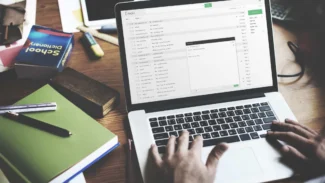
How To Write an Effective Email Cover Letter (Template + Examples)

3 key takeaways
- An email cover letter is typically sent alongside a resume.
- Learn the structure and format of a winning email cover letter, and how to create your own.
- Teal’s AI Cover Letter Generator simplifies the process of creating cover letters tailored to each job.
When applying for a job online, an email cover letter is a crucial part of your application. It's your introduction, providing a personalized narrative that complements your resume and demonstrates your fit for the role.
A well-written email cover letter can distinguish you from other candidates and improve your chances of securing an interview.
This guide walks through best practices for writing an email cover letter, emphasizing the importance of personalization and professionalism.
Struggling to craft the perfect email cover letter? Get started with Teal’s AI Cover Letter Generator for free.
What is an email cover letter?
An email cover letter is a document sent with your resume when applying for a job online or via email. It's an introduction to your qualifications and interest in the role.
Email cover letters have become a standard part of the job application process, often serving as the first impression you make on a potential employer.
The primary role of an email cover letter is to complement your resume by providing context and a personalized narrative that demonstrates your fit for the position. An effective email cover letter can set you apart from other candidates and increase your chances of securing an interview.
Why email cover letters matter
Crafting a compelling email cover letter is more important today than ever before.
A well-written email cover letter can make the difference between your application being noticed or getting lost in a "maybe" bin with other candidates. It lets you showcase your personality, highlight your most relevant skills and experiences, and demonstrate your genuine interest in the position and company.
Plus, an impressive email cover letter can set the stage for a successful job interview.
It gives hiring managers a glimpse into your communication skills, attention to detail, and professionalism—all qualities employers highly value. A memorable email cover letter can pique the hiring manager's interest and make them eager to learn more about you during an interview.
In essence, your email cover letter is a powerful tool for marketing yourself, distinguishing your application, and increasing your chances of landing your dream job.
How to write an effective email cover letter
An effective email cover letter requires a strategic approach to capture the employer's attention and demonstrate your suitability for the role.
Follow these steps to craft a compelling email cover letter:
1. Craft an attention-grabbing subject line
Your subject line is the first thing the employer sees, so make it count. Use a clear and concise subject line that includes the job title and your name.
Marketing Manager Position - John Doe.
2. Address the recipient appropriately
Start your email cover letter with a proper salutation, addressing the hiring manager by name, if possible. If the name is unavailable, use a respectful greeting.
Dear hiring manager,
3. Write an engaging introductory paragraph
In the opening paragraph, briefly introduce yourself, express your enthusiasm for the role, and provide a hook that piques the reader's interest.
Consider mentioning a mutual connection or a notable bullet point relevant to the position.
4. Highlight your qualifications and fit for the role
The main body of your email cover letter should showcase your qualifications, experiences, and skills that align with the job requirements.
Quantify your resume and provide specific examples that demonstrate your potential value to the company. Mention how you can contribute to their success and why you are the ideal candidate.
Teal's AI Cover Letter Generator helps job seekers craft compelling cover letters that effectively highlight their accomplishments.
Teal is able to analyze job descriptions to identify the most relevant skills and experiences to emphasize. It then helps you articulate these professional bullet points more clearly and persuasively, ensuring your cover letter stands out.

Whether you're detailing a project that boosted sales by 25 percent or explaining how you led a successful team, Teal's AI Cover Letter Generator ensures your accomplishments are presented in the most impactful way, increasing your chances of making a strong impression on potential employers.
5. Express enthusiasm and a call to action
Conclude your email cover letter by reiterating your interest in the role and the company.
Express your enthusiasm for the opportunity and provide a call to action, such as requesting an interview or discussing your qualifications further.
6. Use a professional sign-off
End your email cover letter with a professional closing, such as "Sincerely," "Best regards," or "Thank you for your consideration."
Need help overcoming writer's block? Learn how to generate a great cover letter with ChatGPT cover letter prompts .
Tips for writing compelling email cover letters
Writing your first cover letter can be intimidating. Follow these tips to set yourself up for success:
- Keep it concise and focused: Aim for a length of three to four paragraphs, highlighting your most relevant qualifications and experiences.
- Personalize for each application: Tailor your email cover letter to the specific job and company, demonstrating your understanding of their needs and how you can contribute.
- Proofread carefully: Ensure your email cover letter is free from spelling, grammatical, and formatting errors, as it reflects your attention to detail.
- Incorporate keywords from the job description: Use relevant keywords and phrases from the job posting to show your alignment with the role's requirements.
Following a clear, professional format is crucial for creating an email cover letter that makes a strong first impression.
Writing email cover letters with AI
Struggling to craft the perfect cover letter for each job application? Research and compare the best AI cover letter writers to avoid writer’s block.
Teal's AI Cover Letter Generator takes the stress out of the process, allowing you to create effective, tailored cover letters in minutes, not hours.
With just a few clicks, its AI personalizes your cover letter to match any job description, highlighting your most relevant skills and experiences.
Plus, Teal intelligently adds keywords from the job descriptions to help make your cover letter more ATS-friendly, ensuring your application stands out with a professional, customized cover letter every time.
Pro tip: Try one of Teal's Microsoft Word cover letter templates to help you get started!
Proper email cover letter format
The standard parts of an email cover letter include:
1. Subject line
Your email cover letter's subject line is the first thing a hiring manager or recruiter will see. It's your chance to make a strong first impression and entice them to open your email.
When crafting your subject line, aim for clarity and conciseness.
Clearly state the purpose of your email, such as "Application for [Job Title] - [Your Name]."
This immediately lets the reader know what the email is about and who it's from.
Avoid using generic subject lines like "Resume" or "Job Application.” While descriptive, those terms are too vague and overused in application subject lines and, therefore, more likely to be overlooked.
To make your subject line stand out, consider including a unique selling point or bullet point that aligns with the job requirements. This gives the reader a reason to learn more about you.
Lastly, keep your subject line short and sweet, ideally under 60 characters. That way it won't get cut off in the recipient's inbox preview.
Email cover letter subject line example:
Experienced Software Developer with Expertise in [Relevant Skill]
2. Salutation
One of the most important aspects of your email cover letter is addressing it to the right person.
Whenever possible, aim to find the hiring manager's name or person responsible for filling the position. This shows you've done your research and are genuinely interested in the role.
To find the hiring manager's name, review the job posting carefully. Sometimes, the contact person doesn't have their name listed in the ad. If not, visit the company's website and look for a "Team" or "About Us" page. You might find the name of the department head there.
If you still can't find a name, try searching for the company on LinkedIn. Look for people with titles like "Hiring Manager," "Recruiter," or "Human Resources Manager." You can also search for the head of the department related to the position.
If you exhaust all these options and still can't find a name, using a general salutation is okay.
"Dear Hiring Manager," "Dear Recruiting Team," or "Dear [Department] Team" are all appropriate choices. Avoid outdated salutations like "Dear Sir or Madam" or "To Whom It May Concern."
3. Opening paragraph
Your opening paragraph captures the hiring manager's attention and entices them to read further.
Keep your opening paragraph of your email cover letter short and impactful, ideally no more than three to four sentences.
Remember, your goal is to quickly capture the hiring manager's interest and encourage them to continue reading your email cover letter to discover how you can contribute to their organization's success.
Try the following to get started:
- Express your enthusiasm for the opportunity and the company to make a strong first impression.
- Briefly mention how you discovered the position, whether it was through a job board, referral, or the company's website.
- Explain why you are interested in the role and company.
- Showcase your knowledge of the company’s mission, values, or recent achievements.
- Highlight one or two key qualifications that make you an excellent fit for the position.
Email cover letter intro example:
I was thrilled to come across the Marketing Manager position at [Company Name] on [Job Board]. With my 5+ years of experience in digital marketing and my passion for data-driven strategies, I am confident I would be a valuable asset to your team.
4. Body paragraphs
One of the most important aspects of crafting an effective email cover letter is showcasing your relevant skills and experience.
To make a strong impression on the hiring manager, carefully select the most impressive and pertinent qualifications from your background that align with the job requirements.
- Review the job description and identify the key skills, experience, and qualities the employer is seeking.
- Choose examples from your work history that demonstrate your proficiency in these areas.
- If the job posting emphasizes strong project management abilities, highlight a time when you successfully led a complex project from start to finish.
- Provide concrete details about your role, the challenges you faced, and the positive outcomes you achieved.
- Quantify your accomplishments wherever possible using hard numbers and metrics.
- Instead of stating you "improved sales," specify that you "boosted sales by 25% within the first quarter."
- Incorporate keywords and phrases from the job description into your email cover letter.
Many companies use applicant tracking systems (ATS) to screen candidates based on the presence of specific keywords. Naturally integrating these terms into your resume and cover letter also increases your chances of passing through the ATS and landing an interview.
Remember, the goal is to clarify to the hiring manager that you possess the necessary skills and experience to excel in the role.
5. Add a call to action
As you wrap up your email cover letter, be sure to finish strong and leave a lasting impression on the hiring manager. This is your golden opportunity to reiterate your enthusiasm for the role and the company, as well as your confidence in the fit.
Start by briefly recapping your key qualifications and how they align with the position's requirements. This reinforces why you're a strong candidate and reminds the reader of the value you can bring to their team.
Then, clearly state your desire to further discuss the opportunity and learn more about how you can contribute to the organization's success.
This call-to-action demonstrates your proactive approach and eagerness to take the next step in the hiring process.
6. Signature
Finally, end with a polite and professional sign-off.
Best regards, Sincerely, Thank you for your consideration.
Include your full name and contact details below your sign-off to make it easy for the hiring manager to reach out to you.
By leveraging AI to streamline formatting, you can ensure each email cover letter maintains a polished, professional appearance while focusing your time on tailoring the content to make a compelling case for your candidacy.
Need a bit of added help? Check out this resource to learn how to format your cover letter and stand out from the crowd.
Email cover letter sample
To help you visualize what an effective email cover letter looks like, let's explore a few examples for different scenarios:
Email cover letter example: marketing manager position
Subject : Experienced Marketing Manager Excited About [Company Name] Opportunity Dear [Hiring Manager's Name], I was thrilled to come across the Marketing Manager position at [Company Name]. With my 5+ years of experience leading successful marketing campaigns and driving brand growth, I am confident I would be a valuable addition to your team. In my current role at [Current Company], I have spearheaded several digital marketing initiatives that have increased website traffic by 40% and generated a 20% increase in lead conversions. I am well-versed in developing data-driven strategies and collaborating with cross-functional teams to achieve measurable results. I am particularly drawn to [Company Name]'s mission of [Company Mission] and believe my skills and experience align perfectly with the goals you aim to achieve. I would welcome the opportunity to further discuss how I can contribute to your marketing efforts and help drive your company's continued success. Thank you for considering my application. You will find my resume attached for your review and look forward to the possibility of an interview. Best regards, [Your Name]
Pro tip: Save time writing a cover letter from scratch, and check out Teal's collection of traditional and simple cover letter templates to help you get started!
Why it works
This email cover letter works effectively for several reasons:
- Personalized salutation : Addressing the hiring manager by name shows that the applicant has taken the time to research and personalize their application, which demonstrates genuine interest in the position and company.
- Clear and enthusiastic introduction : The opening sentence clearly states the position applied for and expresses enthusiasm, capturing the hiring manager's attention right away.
- Relevant experience and achievements : The applicant highlights their 5+ years of experience and provides specific, quantifiable bullet points, such as increasing website traffic by 40 percent and lead conversions by 20 percent. This demonstrates their ability to deliver results and adds credibility to their application.
- Alignment with company mission : By mentioning the company’s mission and explaining how their skills and experience align with the company's goals, the applicant shows they have researched the company and understand its values and objectives.
- Collaborative skills : The applicant emphasizes their ability to work with cross-functional teams and develop data-driven strategies, showcasing their collaborative and analytical skills, which are valuable in a marketing role.
- Professional and polite closing : The closing paragraph reiterates the applicant’s interest in the role, thanks the hiring manager for their consideration, and includes a call to action by expressing eagerness for an interview. This leaves a positive and proactive impression.
- Attachment of resume : Mentioning the attached resume ensures the hiring manager is aware of where to find it, providing a complete picture of the applicant's qualifications.
Overall, this email cover letter is concise, well-structured, and tailored to the specific job and company, effectively showcasing the applicant's qualifications and enthusiasm for the role.
Email cover letter example: software developer position
Subject : Passionate Software Developer Ready to Contribute to [Company Name] Dear [Hiring Manager's Name], I am writing to express my strong interest in the Software Developer position at [Company Name]. As a skilled developer with extensive experience in [Programming Languages/Frameworks], I am excited about the opportunity to bring my technical expertise to support your mission. During my time at [Current Company], I have been responsible for developing and maintaining several complex applications. One notable project involved creating a user-friendly web application that streamlined internal processes, resulting in a 30% increase in efficiency. I pride myself on writing clean, maintainable code and collaborating effectively with team members. I am impressed by [Company Name]'s commitment to pushing the boundaries of technology and creating cutting-edge solutions. I believe that my problem-solving skills and passion for innovation make me an ideal fit for your development team. I have attached my resume, which further highlights my qualifications and experience. I would appreciate the opportunity to discuss how I can contribute to [Company Name]'s success. Thank you for your time and consideration. Sincerely, [Your Name]
This email cover letter works well for several reasons:
- Personalized salutation : Addressing the hiring manager by name shows the applicant has taken the time to research and personalize their application, demonstrating genuine interest in the position and company.
- Relevant technical skills : The applicant mentions their experience with specific programming languages and frameworks, highlighting their technical expertise and aligning with the job requirements.
- Quantifiable bullet points : The applicant provides a specific example of their work, noting a 30 percent increase in efficiency from a user-friendly web application they developed. This demonstrates their ability to deliver tangible results and showcases their impact on previous projects.
- Alignment with company goals : By expressing admiration for the company’s commitment to innovation and technology, the applicant shows they have researched the company and aligns with its values and mission.
- Highlighting key strengths : The applicant emphasizes their problem-solving skills, passion for innovation, and ability to write clean, maintainable code, which are essential qualities for a software developer.
- Attachment of resume : Mentioning the attached resume ensures that the hiring manager is aware of additional details supporting the application, providing a complete picture of the applicant's qualifications.
For more inspiration and guidance, check out Teal's extensive collection of cover letter examples spanning various industries and roles.
How to proofread and edit your email cover letter
A well-polished cover letter demonstrates attention to detail and professionalism, increasing your chances of impressing the hiring manager.
Before hitting send on your email cover letter, take the time to carefully proofread and edit your work by following these steps:
1. Review your email cover letter for any spelling or grammatical errors. Even minor mistakes can make you appear careless or unqualified.
2. Use spell-check tools and read through the content slowly to catch any typos or awkward phrasing.
3. Assess the overall flow and tone of your writing. Does your email cover letter have a logical progression of ideas? Is the tone appropriate for the company culture and industry?
4. Make sure your personality shines through while maintaining a professional demeanor.
5. Get a second opinion. Consider having a trusted friend, family member, or mentor review your email cover letter as well.
A second set of eyes can often spot issues you may have missed and provide valuable feedback for improvement.
Remember, a little extra effort in the editing process can go a long way in making a positive first impression on potential employers.
How to send your email cover letter
Once you've crafted a compelling email cover letter, you need to send it correctly to ensure it reaches the hiring manager and makes the desired impact.
1. Use a professional email address
Create an email address that includes your name, such as [email protected] . Avoid using casual or outdated email addresses that could undermine your credibility.
2. Attach your cover letter and resume
Use widely accepted file formats such as PDF or Microsoft Word (.doc or .docx). PDF resumes are often preferred because they preserve the formatting and layout of your documents across different devices and platforms.
Pro tip: Save time writing and try one of Teal's Google Docs cover letter templates to help you get started!
3. Name your attachments professionally
Name your attachments clearly, such as "FirstName_LastName_Cover_Letter.pdf" and "FirstName_LastName_Resume.pdf."
This makes it easy for the hiring manager to identify and keep track of your application materials.
4. Double-check before sending
Before hitting send, double-check that you've attached both your cover letter and resume.
It's also a good idea to test your email by sending it to yourself or a friend to ensure that the attachments open correctly and the formatting appears as intended. This extra step can help you avoid any last-minute technical issues that could derail your application.
Write cover letters faster with Teal
Writing an effective email cover letter can be time-consuming and daunting, especially when you're applying for multiple positions.
Teal's AI Cover Letter Generator simplifies the process, allowing you to generate a compelling email cover letter in minutes.
The AI-powered Cover Letter Generator guides you through the essential components, ensuring you don't miss any crucial elements. Simply input key information about your background and the job you're applying for, and the tool will craft a personalized email cover letter that highlights your relevant skills and experience.
One of the most significant advantages of using Teal's AI Cover Letter Generator is its ability to create customized content for each application. The tool analyzes the job description and incorporates relevant keywords and phrases, demonstrating to hiring managers that you're a strong fit for the role. This level of customization can significantly increase your chances of standing out from other job seekers.
Rather than starting from scratch for each application, you can leverage AI suggestions to quickly assemble a polished email cover letter. This efficiency allows you to focus your energy on other aspects of your job search, such as networking and interview preparation.
Try out Teal's AI Cover Letter Generator today.
Frequently Asked Questions
Is it okay to write a cover letter in the email body.
It depends on the company size and hiring process. Small companies with fewer applications to manage may prefer the cover letter in the email, while larger companies will need it as an attachment to add to a candidate’s file.
Can the email message itself serve as the cover letter?
In some cases, the email message can serve as your cover letter, particularly if the job posting explicitly states this preference. If taking this approach, craft the email with the same level of care and attention you would give to a formal cover letter document.
How to choose between PDF and Word attachments?
When it comes to attaching your cover letter and resume, both PDF and Word resumes are generally accepted. PDFs are often preferred as they preserve the formatting and layout, ensuring your documents appear exactly as intended.

Nathan Thompson
Related articles.

How to Make an InDesign Resume [+ Templates]

How (and What) to Name Your Resume File

ZipJob Reviews: Ratings & User Feedback

JobHero Reviews: Ratings & User Feedback

We help you find the career dream.
- Search Search Please fill out this field.
- Career Planning
- Finding a Job
- Cover Letters
Email Cover Letter Examples and Formats
:max_bytes(150000):strip_icc():format(webp)/ADHeadshot-Cropped-b80e40469d5b4852a68f94ad69d6e8bd.jpg)
What to Include in Your Email
How to format an email cover letter, email cover letter examples, cover letter articles and advice.
Hero Images / Getty Images
An email cover letter includes all the essential elements of a hard copy cover letter and serves the same purpose: to impress the hiring manager and convince them to bring you in for an interview.
It’s essential to follow the employer's instructions so that you don’t wind up bounced from contention because of a technicality. You might be asked to send your cover letter in the body of the email or as an attachment, or to add a specific subject line, or to send it as a specific file type, e.g., a Word document or PDF.
Cover Letter Salutation
It’s best to address your letter to a specific person, instead of using a generic salutation like "To Whom It May Concern" or "Dear Sir or Madam." These can look unprofessional and like you didn't make an effort.
Cover Letter Body
The body of your cover letter lets the employer know what position you are applying for, why the employer should select you for an interview, and how you will follow up. This section of your cover letter includes:
- First paragraph: Why you are writing. It is "the grab," your chance to grasp your reader by the collar and get his attention. Offer some specific, focused information regarding the job you're seeking and a few core strengths that demonstrate suitability for the position.
- Second paragraph: What you have to offer the employer. It is your hook where you highlight examples of the work you’ve performed and the results you’ve achieved. Draw on your key competencies from your resume, though don't copy it word for word. Bullet points in this paragraph are effective in drawing your reader's eye to your successes.
- Third paragraph: Your knowledge of the company. Show that you did your research and know something about the business and how you can contribute to its mission.
- Fourth paragraph: Your closing. Summarize what you would bring to the position and suggest next steps by requesting a meeting or suggesting a call.
- Address an Email Cover Letter : Make sure your cover letter and other materials get to the right place – and make a good impression when they get there.
- Email Cover Letter Subject Line Examples : The subject line is the first thing a hiring manager will see when they look at your email. Make yours count.
- Email Cover Letter Salutation Examples : Confused about how formal or informal to be in your salutation? These tips will help.
- Email Cover Letter Closing Examples : Keep it professional all the way through, with these cover-letter ready closers.
Most cover letters follow the same basic format, but the contents will be very different, depending on your goals and circumstances. These templates cover a wide range of situations, from a cold email inquiring about job openings to an internal job promotion cover letter to a job transfer request.
- Email Cover Letter Sample
- Sample Email Cover Letter Inquiring About Job Openings
- Sample Email Cover Letter - Part-Time Job
- Sample Cover Letter - Referred by a Contact
- Sample Email Cover Letter - Summer Job
- Sample Email Message - Volunteer Position
- Sample Formatted Email Cover Letter Message
- Job Promotion Cover Letter
- Job Transfer Request Email Message
- Job Transfer Request Email Message - Relocation
Whether you’re looking for your very first job or making a career change to something new and different, there are certain guidelines that can help you create a cover letter that sells your experience. For example:
- Write a customized cover letter for every job opening . You may develop your own cover letter template to help you get started, but be sure to tweak it every time so that it’s a perfect fit for the role’s requirements.
- Include keywords in your cover letter . Analyze the job listing, looking for keywords that describe the job duties and the experience and skills required to fulfill them. Then, use those words in your cover letter and resume. It will help you get past the applicant tracking system and to a real human being who can call you for an interview.
- Proofread, proofread, proofread. Pay special attention to the name of the hiring manager and the company and its products. Then, ask an eagle-eyed friend to give your cover letter one last review before hitting “send.”
Email Cover Letter Samples
In today's competitive job market, your email cover letter is often your first and only opportunity to make a strong impression on a potential employer. Crafting a compelling cover letter can be the difference between securing an interview and your application getting lost in the shuffle. To help you put your best foot forward, we've compiled a range of real-life email cover letter examples and essential tips to guide you through the process.
These examples, adapted from real job seeker emails, showcase a variety of styles, from "salesy" to "direct and to the point," ensuring you can find a template that aligns with your personality and the specific job you're applying for. Remember to include these key elements as you tailor your email cover letter:
Etiquette for Any Email Cover Letter
- Mention the title of the position you’re applying for in the subject line and body of your email.
- Explain where you found the job posting or how you heard about the position.
- Conclude with a subtle call to action to remind the hiring manager of the action you’d like them to take, such as, “I look forward to hearing from you.”
- List your full name and contact information in your email signature block (not just on your resume attachment).
- If applicable, quickly explain any questions that your resume may raise. For example, if you’re from out of town but planning to move close to the job location, or you’ve been at your current position for only a short time.
Don’t:
- Don’t start your cover letter with your name. Instead, introduce yourself in the letter with a relevant qualification and connect it to the position.
- Keep your cover letter concise. Just like your resume, keep your document to just one page to entice hiring managers instead of overwhelming them.
- Avoid any spelling or grammar errors in your document. The smallest typo can ruin your chances at the job.
- Don’t address the wrong company name or the wrong company contact’s name. This could be seen as awful cover letter etiquette and indicate you’re not attentive to details.
- Don’t ever include your salary requirements unless otherwise directed by the potential employer.
Signature on Email Cover Letter
Without a signature at the end of your email cover letter, you could be missing out on incredible potential job opportunities. This quick snippet of your contact information makes it easy for recruiters and hiring managers alike to contact you.
When it comes to deciding between a physical signature and a name sign-off, there are benefits to either option. With a name sign-off, you can use a digital signature service like Eversign and RightSignature to give your cover letter that personal touch.
If you’d prefer to include just a regular email signature, make sure to include your full name, email and phone number. You can also consider adding a LinkedIn button so the hiring manager can have more insight on your experience and skill set.
How to Format an Email Cover Letter
Wondering how to format your email cover letter? You’re not alone. Once you’ve written your incredible cover letter providing more information on your expertise and how it relates to the job you’re applying for, it’s vital to format it correctly before sending it to any recruiters. If it isn’t formatted correctly, you could be missing out on the job opportunity.
Regardless of the cover letter template you’ve chosen, make sure to include these key components when formatting your email cover letter:
- Write a subject line that includes the position you’re applying for
- Address the company contact’s name in the salutation
- Clearly state what you’re hoping to accomplish in the first few sentences
- Summarize your strengths, skills and experience by connecting them to the job opportunity
- Use a font that’s easy to read
- Avoid typos in your message by proofreading
- Include a signature with your contact information
- Always send a .pdf file rather than a word doc or other format
Email Cover Letter Examples for Legal Professionals
Example #1: if you prefer to keep it brief..
Subject Line: Interest in Litigation Associate Position
To Whom It May Concern:
I am interested in the Litigation Associate position advertised on LinkedIn. I have attached my resume and cover letter for your review.
Thank you for your time. I look forward to hearing from you.
Best regards,
First Last Name
Example #2: If you’re relocating to the city where the job opportunity is located.
Subject Line: Expressing Interest and Relocating Near Litigation Secretary Position
Dear Hiring Manager,
I’m writing to express my interest in the Litigation Secretary position listed on Monster.com. My resume is attached for your review and consideration.
I am a fast learner, very dependable, organized, and computer savvy. I have extensive experience assisting firm attorneys and multiple paralegals, as well as supervising and managing an office. While I currently reside in Los Angeles, I will be moving to San Francisco at the end of the month.
I look forward to the opportunity to meet with you to learn more about your firm, its plans and goals, and how I might contribute to its continued success. I can be your ideal candidate if given this opportunity. Thank you.
Kind regards,
Example #3: If a colleague referred you.
Subject Line: John Mentioned Your Firm is Seeking a Litigation Secretary
Dear Sir/Madam:
I was referred to you by a mutual acquaintance, John Smith, who said you have an opening for a litigation secretary.
I have many years of experience as a litigation secretary, most of them working with managing partners. I am a professional looking for a career, not just a job. I am organized, reliable and self-motivated. I like being part of a team, but can also work independently.
Included with this e-mail is a copy of my resume for your review and consideration. Once you have had an opportunity to review my resume, please contact me if you have any questions or to arrange an interview. I look forward to speaking with you in the near future.
Thank you for your time,
Example # 4: If you’ve been at your current position for less than one year.
Subject Line: Experienced Legal Secretary Seeking Long-term Opportunity with Stable Litigation Firm
Please allow this introduction. My name is Jane Smith, and I have 12 years of legal secretarial experience working with managing partners of small, mid- and large-sized law firms. My current typing speed is 105 wpm from written form and 120 wpm from live dictation with the utmost accuracy. I am interested in the Litigation Secretary position advertised on your firm’s website.
I am currently working for a small civil litigation firm. However, after only 11 months in this position, the financial stability of the firm has significantly changed. Therefore I am seeking long-term tenure with a stable civil litigation firm.
Attached please find my resume and list of references. If you are interested in the professional skills and positive attributes I can contribute to your firm, please contact me at [phone number] at your convenience to schedule an interview.
Thank you for your time and consideration.
Respectfully,
Example #5: If you want to dazzle the hiring manager with your qualifications.
Subject Line: Do you need a conscientious paralegal at your firm?
Dear Recruiting Administrator:
Do you need a hardworking, creative and conscientious paralegal to meet your firm’s needs? If so, I can help you. The following is a summary of my qualifications:
- More than ten years of progressively responsible legal experience;
- Bachelor’s Degree with Honors in Business Administration;
- Exceptional verbal, written and analytical skills;
- Advanced computer skills;
- Outgoing personality and “can-do” attitude.
I would like to meet with you to discuss how I might assist your firm in fulfilling its present needs.
My resume is enclosed for your review. If you need someone who is highly motivated, eager to learn, and willing to work hard to succeed, please contact me at [phone] or via email: [email].
Thank you for your time and consideration,
Now, start writing your cover letter!
They say the first impression is a lasting one — so make sure your digital introduction represents you well. Use your best judgment with each position you apply to; for an entry level position keep your cover letter more concise while going into further depth and providing more information with upper level positions.
These examples are meant to be a starting point only — add your own voice, style and experience to make your own standout (or at least solid) email cover letter.
Start building out cover letters that will help you stand out and land the job!
The Difference Between a Cover Letter and the Email You Send With Your Application
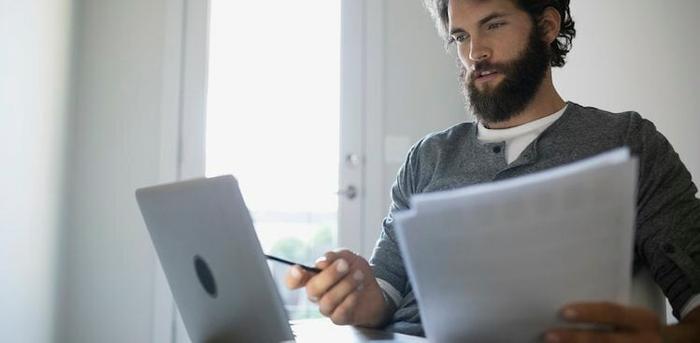
When it comes to making a job change, getting it right truly matters. You need to get the keywords right , the messaging right , the formatting right . You’ve got to find the right people to endear yourself to, and the right words for your cover letter and follow-up correspondence.
And, for the love of it all, you’ve got to nail the approach.
But, my oh my, there are so many considerations—so many things we all second guess ourselves on when applying for a job.
Should you make the cover letter the body of the email, or attach it separately? (Or both?) Do you address the person by first name, or go with Mr. / Ms. So-and-So? (And, does same rule apply for both?) How casual or formal do you need to be? Is there a right or wrong format for cover letters and emails? Does the cover letter need to be a page or less? How long should the intro email be?
Holy Hannah—it’s enough to make the coolest cucumbers among us start to feel like crazy people. And that’s even before you’ve made an introduction.
Deep breaths, everyone. Deep breaths. Let’s break this cover letter stuff down into manageable chunks. Here’s what you need to know:
Should the Cover Letter Be an Attachment or Just the Body of Email?
The short answer is: either. Not both, either.
If you ask 10 recruiters of hiring managers which they prefer, you’ll probably get five who say attachment and five who say email. But here’s the good news: Nearly all will report that it’s not going to make or break you either way. So, don’t let this topic unravel you.
I happen to be a proponent of “cover letter as body of the email,” and here’s why: It gives you the opportunity to make a strong, memorable first impression the millisecond that reviewer’s eyes open their inbox. You can draw someone in with an incredible opening line, and then showcase the ways in which you could contribute to the team.
If, instead, you decide to go with cover letter as attachment, you should be brief and point the reader to the attachments.
I’ve learned you are seeking a senior project manager with e-commerce experience and knowledge of Jira. That’s me. My attached resume and cover letter outline my qualifications for the role. Thank you very much for your consideration. I hope to hear from you soon!
Keep it brief if you go this route. Those on the receiving end won’t appreciate having to plow through a super long email and all your attachments.
Lastly, don’t even think about replicating the cover letter in both the email and the attachment. That’s just ridiculous (and, makes you look totally indecisive).
Now that we got that figured out, let’s answer the other questions that are probably eating at you:

Do I Use a First Name Salutation—or a More Formal One?
This is best answered with, “It depends”—for both the cover letter and the accompanying email. (I know, just doing my part to make things simple here.)
In all seriousness, it’s best to evaluate the tone and style of the organization you’re attempting to join, and then guess which salutation would be most would the appropriate and appreciated. You can do this pretty easily by reviewing the company’s website and social media presence.
Remember, you’re going to be hired for that next role if (and only if) you’re a “yes” to these three questions
- Do we think she can do this job?
- Do we like her?
- Do we think she’ll fit in around here?
That said, if you can introduce yourself in a way that implies right out of the gates that you’re a triple yes, you’re in business.
Is a Conversational Style Allowed?
In general, I think that job seekers get a bit too revved up about “proper” and end up losing sight of the fact that there’s an actual person at the receiving end of this (assuming you’re emailing your application directly).
Guess what? People like engaging, conversational reading. They notice when an applicant seems genuine, personable, and interesting. They appreciate when plowing through their pile of candidates doesn’t feel like total drudgery.
That being the case, unless you’re applying for a role within an extremely conservative or structured industry or organization, heck yes, a conversational style is allowed. Certainly, this is not your time to bust out a bunch of slang or (gasp) use language that could offend, but it’s a-ok to make your cover letter or intro email read like you’re a real person.
Just be sure and make it clear—in both cases—why you want to work for that company and what, specifically, you can walk through their doors and deliver.
Is the One Page Rule for Cover Letters Still True? What About in an Email?
Hard and fast “rules” make me crazy in general, so I’m not going to announce the exact length that your cover letter or your intro email need to be. I will simply suggest that you get in there, quickly endear yourself to the recipient, and then spell out, specifically, how and why you make perfect sense for the role you’re pursuing. And then wrap it up.
If you can pull it off with a one-page cover letter, absolutely. If you need a page and a half? So long as you’re peeling out any and all unnecessary blabber, knock yourself out. (And this article tells you how to cut it down to make it as effective as possible.)
For the email, again, get to the point and don’t be redundant if you’re also attaching a cover letter.
You can get these things right, for real. Nail the big stuff, sweat the details that truly matter, and get right to the business of making your grand entrance, well, one that’s grand.
WTO / Letters and Emails / Cover Letters / 32 Email Cover Letter Samples | How to Write (Examples)
32 Email Cover Letter Samples | How to Write (Examples)
An Email Cover Letter is a formal document sent by an applicant to the hiring manager expressing their interest in a job position.
It supports the resume and gives more details about you as an applicant. It can be sent either as an attachment or as part of the main body.
The purpose of the cover letter is to support a resume. It elaborates on personal attributes and skills related to the position you are applying for to increase your chances of getting a job. It achieves its purpose by mentioning previous job experiences associated with the position you are applying for. Thus, the cover letter helps in supporting your resume, which can be less effective when submitted alone.
Free Templates
Whether you’re applying for a job or reaching out to a potential client, the templates provided below offer a convenient and professional way to craft your cover letter. By using these templates, you can save time and ensure that your cover letter is well-structured and visually appealing. With customizable sections for your contact information, introduction, skills, and closing, the templates make it easy for you to create a compelling cover letter that leaves a lasting impression.
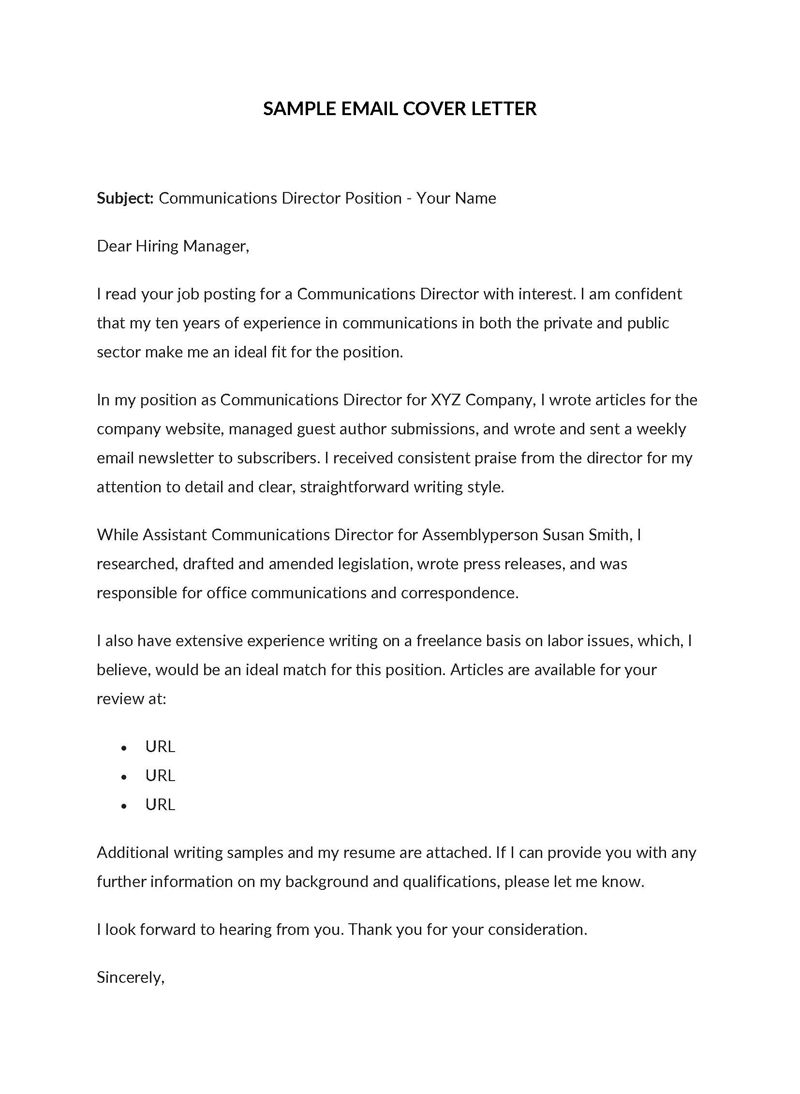
How to Write and Send the Cover Letter
When sending it, you should consider specific aspects, such as sending it as an attachment, the position you are applying for, and what to include in the main body.
Some of these aspects, which should be considered, are discussed below:
Send your cover letter as an attachment
Some organizations may request that the cover letter be sent as an attachment. Hence, ensure that you save the document as a PDF (portable document file) file that cannot be edited by someone else after you submit it. Saving the document under your name helps avoid confusion for the hiring manager and makes your application stand out.
If an employer does not accept the attachments, you should then copy your cover letter and paste it as the body. Ensure that you have corrected the formatting, as copy-pasting may affect the original format of the letter. In this case, once the hiring manager opens your email, they will directly see your cover letter.
Add an informative subject line
A subject line states the purpose, and it should be short, precise, and grammatically correct to establish professionalism. In addition, it helps the hiring manager understand its purpose and helps your application stand out among other applicants. The length of the subject line should be between 46 and 70 characters. Ensure that you mention the position you are applying for and your name in the subject line. This information helps the hiring manager know the position you are applying for and differentiate different cover letters.
On the email subject lines, write “Customer Service Representative- Mike Bond.”
Start with a greeting
Start the cover letter with a greeting and keep it professional, not friendly. Mentioning the hiring manager’s name creates a natural bond and interest in the hiring manager. It also increases your chances of getting hired. Before sending the application, research the company’s website to identify the hiring manager’s name. If the name is not available on the website, you can contact the organization directly and request the name from their customer service agent. This shows that you have taken an interest in the opportunity, and you have learned how the organization and its employees operate. If you do not know the hiring manager’s name, a general phrase can be used.
“Dear sir/madam.”
Write a simple message in the body
In the body, mention the position you are applying for and state the qualities you possess that are relevant to the position. In this section, you can also mention previous work experiences that are helpful or relate to the open position. These details help increase the chances of you getting hired as some of the qualities might be what the hiring manager is looking for. Additionally, mention how you can use your skills to improve the performance or output of the organization.
Include examples
Give examples of previous accomplishments in the cover letter, which will spike interest in the hiring manager and ensure they relate to the position you are applying for. In addition, ensure you have researched the organization’s operations so that the examples you provide positively impact the business .
Attach URLs
URLs are links that can be attached to them to help you provide more details about your capabilities by giving the hiring manager a link to access some samples of your work. This is applicable in several fields, such as graphic design , freelance writing or art.
Close with a thank you
At the closing, remember to thank the hiring manager again for the opportunity they gave you.
“I thank you for the opportunity and am looking forward to your response.”
Sign off with your signature
Signing off on the cover letter shows professionalism. Use courteous words such as sincerely, best regards, or thank you. In addition, a digital signature can be added along with an email and personal telephone number. These details ease communication in the case the hiring manager wants to give feedback or request additional details.
Attach your resume
Attach your resume, as it helps the hiring manager know you and your level of education, work experience, and personal interests. Ensure that your resume is written in a professional way to capture the attention of the hiring manager.
Cover Letter Samples
Following are some samples given for your better understanding:
Sample Cover Letter for a Graphic Designer Position
Subject: Application for Graphic Designer Position – Jane Doe
Dear Mr. David Smith,
I am writing to express my interest in the Graphic Designer position listed on BrightWeb Solutions’ website. With a Bachelor’s degree in Graphic Design from the Art Institute of Chicago and over five years of professional experience, I am eager to bring my creativity and expertise to your team.
At my current role at CreativeEdge Marketing, I successfully led the redesign of the company website and managed various digital design projects, resulting in a 30% increase in online engagement. My proficiency in Adobe Creative Suite, coupled with my passion for innovative and responsive design, aligns well with the requirements of your position.
I am particularly excited about the opportunity at BrightWeb Solutions because of your commitment to cutting-edge digital solutions. Your recent overhaul of the E-commerce platform for Luxe Fashion was both impressive and inspiring, and I am keen to contribute to similar groundbreaking projects.
Attached is my resume and portfolio for your review. Thank you for considering my application. I look forward to the possibility of discussing my potential contribution to your esteemed design team and am available for an interview at your earliest convenience.
Best regards,
[email protected]
(555) 123-4567
Sample Cover Letter for a Project Manager Position
S ubject: Project Manager Position Application – John Smith
Dear Ms. Emily Johnson,
I am reaching out to apply for the Project Manager position at Global Tech Innovations, as recently advertised on LinkedIn. My extensive experience in project management within the technology sector, coupled with a strong understanding of agile methodologies, positions me as an ideal candidate for this role.
In my current role at TechSolutions Inc., I spearheaded the ‘Smart Home Integration’ project, leading a team of 15. The project not only finished 20% ahead of schedule but also 15% under budget, demonstrating my ability to efficiently manage resources and drive results. My approach is results-oriented and efficiency-driven, perfectly aligning with the dynamic and innovative ethos of Global Tech Innovations.
I am particularly impressed by Global Tech’s dedication to smart technology solutions, especially your recent breakthrough in AI-powered automation systems. I am excited about the prospect of leveraging my experience in project management and strategic planning to contribute to such innovative endeavors.
Enclosed is my resume for your review. I am keen to discuss how my background and skills would be beneficial to Global Tech Innovations. Please feel free to contact me to arrange an interview at your convenience.
Thank you for considering my application.
(555) 987-6543
Key Takeaways
The two sample cover letters exhibit several key elements that make them effective and useful for job applicants writing similar letters.
- Both letters start with a clear subject line that specifies the position being applied for, immediately clarifying the purpose of the email. The salutation is formal and addresses the hiring manager by name, which adds a personal touch.
- Each letter highlights the applicant’s relevant educational background and work experience.
- Both applicants detail specific achievements in their current roles, quantifying their success. They also mention specific skills pertinent to the job (e.g., proficiency in Adobe Creative Suite for the graphic designer, experience in leading a team for the project manager).
- Each letter shows that the applicant has researched the company and understands its objectives.
- Both letters end with a polite thank you, an invitation for further discussion or interview, and provide contact details, making it easy for the employer to follow up.
- The tone is professional and enthusiastic, demonstrating the applicant’s eagerness and fit for the role. The structure is well-organized, flowing logically from the introduction to the body section to the conclusion.
Email Cover Letter Examples
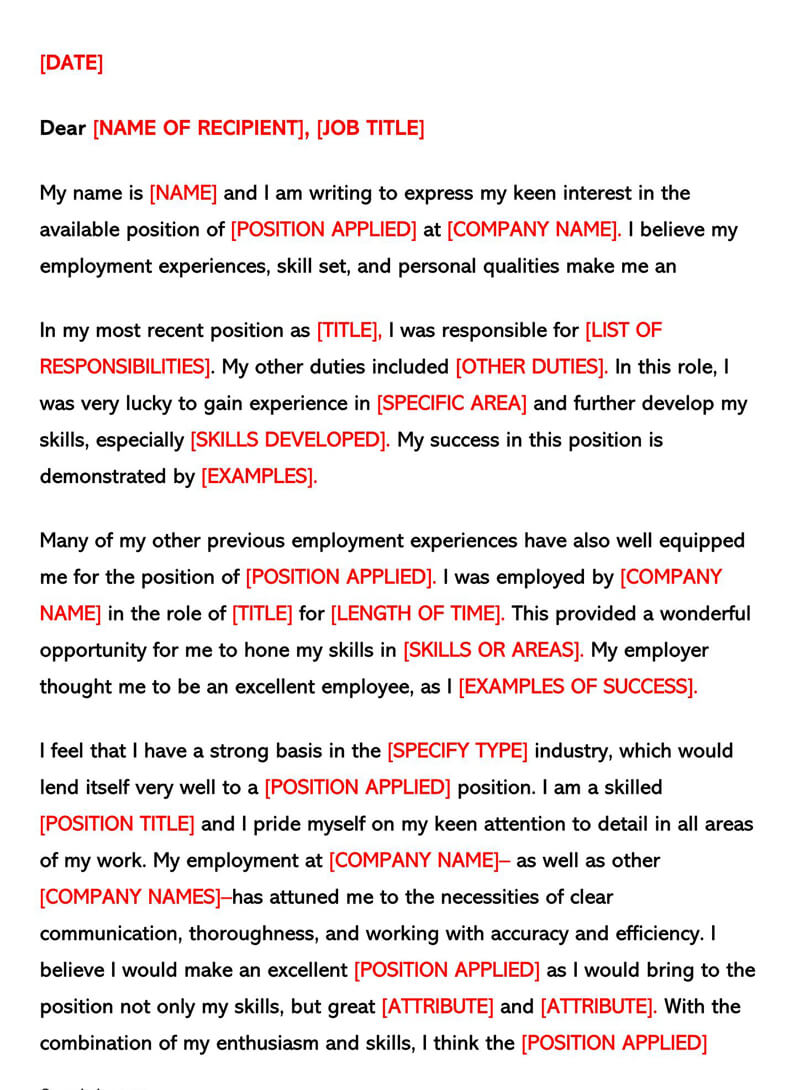
Below is a cover letter template:
Subject Line: Application for (the position you are applying for)
Dear (name of the hiring manager),
Following your advertisement (mention where you saw the advertisement), I am writing to express my interest in the (position you are applying for) in your organization. I have attached my resume as requested in the application guidelines.
I have vast experience in (mention a similar position), and I will use my capabilities to ensure that I fulfill the organization’s goal. I am a fast learner, a participant in teamwork, a keen listener, and a problem solver, and I will ensure that I do my best to satisfy the customers’ needs.
I am looking forward to your response and learning more from the organization to drive us towards its success. Thank you.
Kind regards,
First Last Name
Tips for Writing the Cover Letter
When writing it, ensure that you follow a specified format, and the following tips should be put into prior consideration.
Use a professional address
Along with the subject line, your email address is the first thing the hiring manager will see. Therefore, you need to create a good impression by using a simple one. Use a professional email address, as it shows decency and also increases your chances of getting hired. A professional address should be short and can be generated from your name.
Save your file correctly
Save it correctly to avoid a change of format when the document is changed from a Word document to a PDF document. Saving also entails ensuring that the correct topic sentence is used, making it easier for the hiring manager to identify the file and the position you are applying for. Ensure that you save your file as .doc or .pdf to preserve the original outlook of the cover letter. Moreover, ensure that you save the file name as first name-last name-cover letter, {Smith-Simon-cover letter} to make it easy for the hiring manager to trace your cover letter after they download it from the email attachments.
Pick a strong subject link
Pick a strong subject line that should entail your first and last name and the title of the position you are applying for. These details make it easier for the hiring manager to identify the position you are applying for, making your email stand out.
Keep it short and straightforward
Ensure that it is short and straightforward, only keeping your focus on the main ideas. A short email saves time for the hiring manager and gives them the chance to read through the entire letter. This increases your chances of getting hired.
Do some research
Doing detailed research before sending the cover letter is crucial, as it helps you identify important aspects of the company. Ensure that you confirm the open position so that you can apply for the correct job offer . Research the name of the hiring manager or contact the office number available on their website to confirm the name so that you can mention the hiring manager’s name.
Send yourself a test email
You can send yourself a test email of your application and the attachments to see how it will appear to the recipient. This is important as it helps you know if the formatting is correct and if all attachments open correctly. After the test, you can send the application to the hiring manager, as there will be a minimal chance of errors on the cover.
Check job application guidelines
Before submitting it, check the application guidelines closely, as different organizations provide different application procedures. Verify if the company has specified if the cover email should be sent as an attachment or as part of the main body. Following the correct specifications increases your chances of being hired.
Final Thoughts
A cover letter is an important document that is used to support a resume by giving additional details about you as an applicant. Therefore, it is essential to follow specific guidelines while sending the application and ensure that the cover letter has the correct format. The letter should be written in a formal tone. The applicant’s details, including their name and email address, should be included on the cover letter.
About This Article
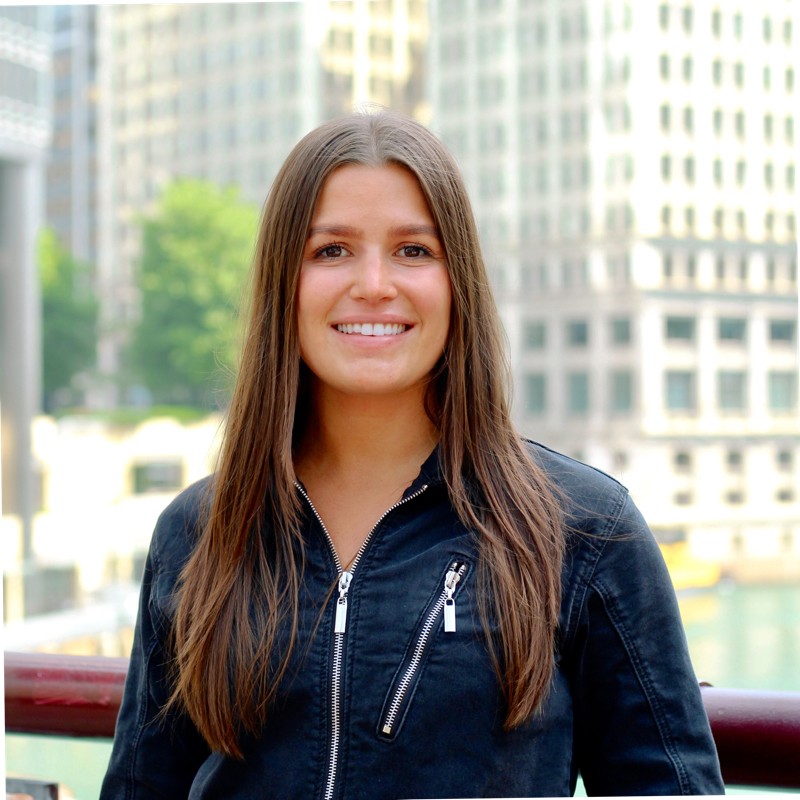
Was this helpful?
Great! Tell us more about your experience
Not up to par help us fix it, keep reading.

Cover Letters , Letters and Emails
Sample cover letter for customer service representative.

Accounting Cover Letter Examples (Writing Tips)
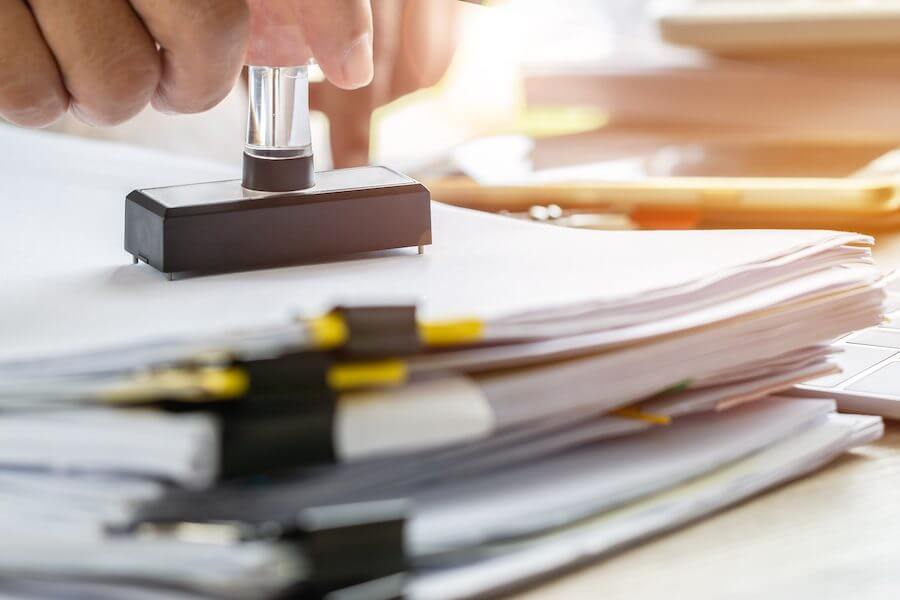
Cover Letter for Clerk Jobs (Free Templates)

Legal Assistant Cover Letter Examples (Free Templates)

Cover Letter With No Experience Examples – Writing Guide

Administrative Assistant Cover Letter Samples

8 Perfect Samples for Executive Assistant Cover Letter

Cover Letters
New graduate nurse cover letter (18 best examples).
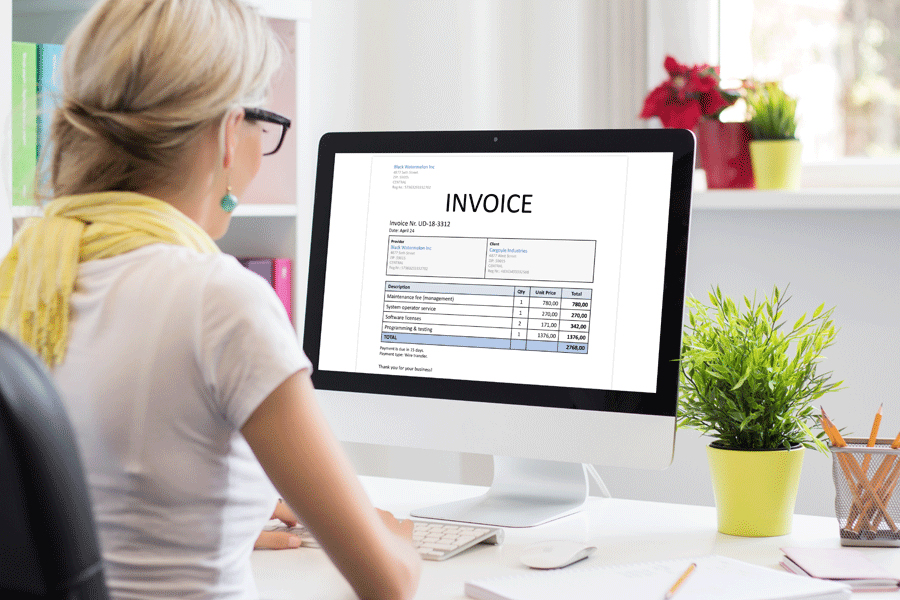
Debt , Letters and Emails
Payment reminder emails for overdue invoices – templates.
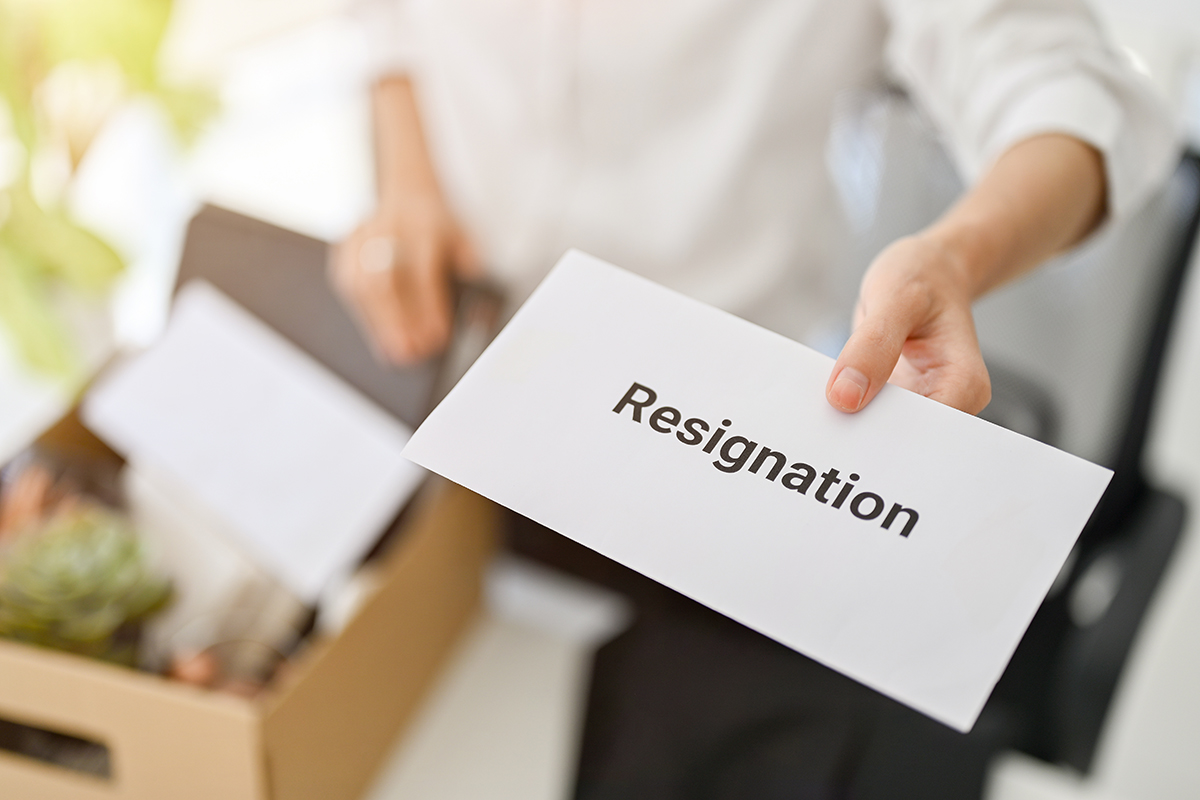
Letters and Emails
Sample resignation letters (for job that’s not a good fit).

Forms , Notes
30+ best soap note examples (format & free templates).

Proposals , Rejection
Bid proposal rejection letter samples (writing tips), thank you for your feedback.
Your Voice, Our Progress. Your feedback matters a lot to us.
- Resume Writing
- Resume Examples
- Cover Letter
- Remote Work
- Famous Resumes
- Try Kickresume
Follow-Up Email After Interview: Essential or Optional? (+4 Email Templates)
- Júlia Mlčúchova ,
- Updated September 3, 2024 9 min read
Nailing the job interview already feels like a huge win, and all you want to do now is relax. But before you do that, don’t forget to send a follow up email after interview to keep the momentum going.
And yes, you may feel like sending a follow-up email after an interview is too pushy or makes you seem too eager.
But still, it's a step you don't want to skip .
Because sending a quick, thoughtful note after the interview rounds isn't just a polite gesture. It's yet another opportunity to show off your professionalism and emphasize your interest in the role .
But what should a follow-up email actually include? How soon do you need to send it? And what if you already sent one follow-up email and got no answer?
We're here to guide you through it, and even include some examples you can download or simply copy & paste .
Table of Contents
Click on a section to skip
But first, what is a follow-up email after interview?
Why you should always send a follow up email, how to write a follow up email after an interview in 6 steps, after interview follow up email example, after interview follow up email templates, extra tips for your follow up email after interview, steer clear of these follow up email mistakes, key takeaways: follow-up email after interview.
As the name (subtly) suggests, a follow up email after an interview is a brief, polite message you send to your interviewer after your meeting.
Content-wise, it's your chance to:
- thank them for their time,
- express your continued interest in the role,
- and remind them why you’re a great fit for the position.
In short, this email keeps you on their radar and can influence their decision in your favor. It’s a small step, yes, but one that can make a big difference in your job search!
Job interview didn't go as planned?
Try preparing for the next one with our AI Job Interview Questions Generator.
None of your friends are sending them, and the hiring manager didn’t mention you need to. So why bother spending time crafting a follow up email after an interview at all?
Numbers will do the talking...
68% of hiring managers agree on the importance of sending a follow-up and 1 in 5 interviewers actually admit to ruling out a job candidate because they didn't receive a thank-you email after their interview, according to this survey .
What can we say — it's always the little things!
And if you're still not fully convinced, here are some more reasons why you should always send a follow up email after interview:
- It's a polite thing to do. Firstly, thanking the hiring managers for their time is simply an act of common courtesy. They’re busy people who took the time to meet with you.
- It emphasizes your interest in the job. Secondly, it's another way to show that you truly appreciate the opportunity and are eager to seize it.
- It shows your initiative. By sending a follow-up email you're basically saying “ I'm really serious about this opportunity and willing to go the extra mile.”
- It gives you an opportunity to ask further questions. Plus, if there were any points you wanted to clarify or additional details you need about the role, this is the perfect place to bring them up.
- It keeps you fresh in their minds. Hiring managers often juggle multiple candidates at once, and a follow-up email helps keep you top of mind.
The sad truth is that despite its many pros, follow-up emails rarely get the love they deserve. But this is good news for you because sending a follow up email after interview will make you stand out from the other candidates who didn't take that extra step.
Here's the thing — writing a follow up email isn't difficult at all.
In fact, it’s a fairly straightforward process that, when done right, can make a significant difference in your job search.
Here's how you can craft the perfect follow up email after interview in just 6 steps:
The hiring manager needs to know what the email is about as soon as it lands in their inbox. For example, a simple and direct subject line like "Thank You – [Your Name]" or "Follow Up on [Position Name] Interview" works well.
Addressing the interviewer by their name, is one of those details that shows your respect and appreciation for their role in the hiring process. For example : "Dear Mr./Mrs. [Last Name],"
Next, start the body of your email by thanking the interviewer for their time. This helps you set a positive tone and show just how much you value the opportunity.
After thanking them, share your excitement about the job and the company. You can also mention something specific you've learned during the interview (a project/initiative) and how it aligns with your skills or career goals.
Were there any questions during the interview that you didn’t fully answer, or something you wish you could’ve explained better? Maybe there was something you wanted to ask but forgot? Well, now’s your chance to address it.
Lastly, thank the hiring manager once more and let them know you’re excited to hear back and discuss what comes next. Additionally, include a classic sign-off phrase like "Best regards," or "Sincerely," to keep things professional.
Curious to see what a good follow-up email after interview can look like? Here's a quick example:
Subject: Thank You – Jamie Taylor
Dear Ms. Johnson,
I hope this message finds you well.
Thank you for taking the time to meet with me yesterday about the Marketing Coordinator position at Creative Solutions. I really enjoyed our conversation, especially learning about the upcoming campaign for the new product launch. The discussion about the innovative strategies your team is planning was particularly exciting and deepened my interest in the role.
Our discussion only reassured me that joining a team like yours would be the right step forward in my career.
If you need any more information from me or have any further questions, please feel free to reach out. I look forward to the possibility of working together and contributing to Creative Solutions’ growth.
Thank you once again for this opportunity.
Best regards,
Jamie Taylor (555) 123-4567
Let’s be honest — writing follow-up emails can be a bit tricky for many. That’s why we’ve put together some handy templates to make things a whole lot easier.
Short and sweet follow-up email after interview
In case you're one of God's favorites, your job interview went smoothly and you left the room convinced that you’ve given it your all.
Congratulations, you lucky person! All your follow-up email needs to be is short and sweet. Something like this:
#1 After interview follow up email template
Click the red button below to download as a Word document & personalize.
The “I still need to clarify something” follow-up email after interview
You know how it goes — everybody has a plan until they get punched in the mouth asked an interview question they didn't see coming.
Of course, there are common interview questions you can prepare for without any problems.
But there's also a whole lot of different situational or even behavioral questions that can catch you off guard.
And, in situations like these, we’re often nowhere near as articulate as we’d like to be. If this is also your case, you can clarify any misunderstandings in your follow-up email like so:
#2 After interview follow up email template
Subject: Thank You – [Your Name]
Dear Mr./Mrs. [Interviewer’s Name] ,
I hope this email finds you well.
I wanted to take a moment to thank you again for the engaging conversation we had about the [Job Title] position. I’ve been reflecting on our discussion and realized I didn’t fully address one of the questions we covered, specifically regarding [specific question or topic] .
Upon further consideration, I believe I could have provided a more detailed response about [briefly explain the clarification] . For instance, [provide a more complete answer or example] . I feel this clarification better illustrates my [relevant skill, experience, or quality] and how it aligns with the role and your team’s needs.
I hope this additional information helps provide a clearer picture of my qualifications. If you have any further questions or if there’s anything else I can elaborate on, please let me know. I’m keen to ensure you have all the details needed to make an informed decision.
Thank you for your understanding, and I look forward to the opportunity to discuss this further.
Best regards, [Your Full Name] [Your Phone Number] [Your LinkedIn Profile]
The “I forgot to ask about something” follow-up email after interview
In a similar vein, the mix of stress, anticipation, excitement, and a touch of good ol’ anxiety can make us forget even our own name. So, it's no wonder that in the heat of the moment, we might forget to ask some key questions.
But the good news is that your follow-up email can fix this mistake (Just copy and paste the text and then adjust as needed):
#3 After interview follow up email template
Thank you again for the insightful conversation we had about the [Job Title] position. I thoroughly enjoyed our discussion and am very enthusiastic about the opportunity to join your team.
After reflecting on our conversation, I realized I forgot to ask a question I was really interested in. Specifically, I wanted to learn more about [specific topic or aspect of the role] . Could you, please, provide some additional details on this?
I appreciate your time and understanding. If there’s any more information I can provide or further questions you have for me, please let me know. I look forward to hearing from you and continuing our discussion.
Second follow-up email template
And finally, it might be that you’ve already sent one follow-up email. A week goes by. Two weeks go by. And you still haven’t heard back from anyone.
Of course, it’s possible that the hiring manager is ghosting you, but it’s more likely that your email simply got lost in the digital void.
In that case, you should absolutely go for it and send another follow-up email.
#4 After interview follow up email template
Subject: Follow-Up on [Job Title] Position
I wanted to follow up on my previous email regarding the [Job Title] position. I understand that you’re likely very busy, but I wanted to check in and see if there have been any updates on the hiring process.
I’m still very enthusiastic about the opportunity to join your team and contribute to [specific aspect of the role or company] . If there’s any additional information I can provide or if you have any updates for me, please let me know.
Thank you again for considering my application. I look forward to hearing from you soon.
Do you want your after interview follow up email to truly stick the landing? Well then, don't miss out on these neat little tips :
- Send a follow-up email to every interviewer. If you spoke with multiple people, make sure to send a personalized follow-up to each. For example, if someone talked about team dynamics, say how excited you are to contribute.
- Timing is everything. The best time to send a follow-up email is within 24-48 hours after the interview. Getting in touch within this window will help keep your candidacy fresh in the interviewer's mind.
- Proofread before sending . Of course, you want to catch any typos or grammatical errors you might've made. Because no matter how perfect your email is, small mistakes like these can make you look unprofessional and careless.
Don't forget that making a positive lasting impression is just as valuable as the first one. So make sure you don't overlook anything.
Of course, you want your email to be perfect. But making mistakes that can undermine your efforts is really easy. Here’re some of the most common pitfalls you should be wary of:
- Not sending a follow-up email. You know how it is — closed mouths don't get fed. And not sending a quick email after your interview can cost you dearly. You should always send one even if you think that the interview didn't go well.
- Being too verbose. Secondly, your email needs to be concise! If it's too long, it can lose the reader’s attention and dilute your main message. And you definitely don't want that!
- Pushing for an immediate answer. Sure, you really can't wait to hear back. But demanding a quick response can be off-putting. Instead, express your appreciation politely without creating any pressure.
And remember, patience is a virtue — especially when it comes to job hunting. So, sit tight, avoid sending daily emails, and maybe even take up a new hobby while you wait.
In conclusion, an after-interview follow-up emai l is a short message you send to the people who interviewed you after your meeting.
It may seem like a minor detail, but it can make a big difference in landing the job!
Here's why you shouldn't overlook its impact:
- It's a gesture of gratitude towards the hiring managers who took time out of their busy schedules to meet with you.
- It shows that you truly appreciate the opportunity and are eager to be part of the company .
- It conveys that you are serious about the opportunity and willing to go the extra mile to secure it.
- It provides a perfect platform to address any lingering questions or seek additional information about the role.
- Lastly, a follow-up email keeps you fresh in the minds of the hiring managers.
You can create an effective follow-up email simply by following this structure :
- Start with a simple subject line.
- Continue with a personalized greeting.
- Voice your gratitude for their time and consideration.
- Emphasize your interest in the job position.
- Clear up any last questions or details.
- Close your email with a friendly and professional sign-off.
Julia has recently joined Kickresume as a career writer. From helping people with their English to get admitted to the uni of their dreams to advising them on how to succeed in the job market. It would seem that her career is on a steadfast trajectory. Julia holds a degree in Anglophone studies from Metropolitan University in Prague, where she also resides. Apart from creative writing and languages, she takes a keen interest in literature and theatre.
Related Posts
10 worst job interview stories ever happened to hiring managers, how to answer “why are you looking for a new job” (5 sample responses).
- 12 min read
Share this article
Join our newsletter.
Every month, we’ll send you resume advice, job search tips, career hacks and more in pithy, bite-sized chunks. Sounds good?
10 Professional Software Tester Cover Letter Examples to Land QA Jobs
When applying for a position as a software tester , having a strong software tester cover letter can make a big difference.
Below are tips and examples to help you write a compelling cover letter for various types of testing positions, including Manual Testers, Automation Testers, API Testers, Performance Testers, and Security Testers.

What is a Cover Letter?
A well-written cover letter helps you make a strong first impression and can increase your chances of getting an interview.
Tips for Writing Your Cover Letter
Examples of cover letters for different testing roles, manual tester cover letter example #1, manual tester cover letter example #2, automation tester cover letter example #1, automation tester cover letter example #2, api tester cover letter example #1, api tester cover letter example #2, performance tester cover letter example #1, performance tester cover letter example #2, security tester cover letter example #1, security tester cover letter example #2, faqs – software tester cover letter, how can i utilize cover letter examples in my job search, what are the key components of a good cover letter example.
By incorporating best practices from the winning examples outlined in this article, candidates can effectively showcase their relevant skills , experience, and passion for quality assurance.
Personalization, clarity, and professionalism are key elements that can set an applicant apart in a competitive job market, ultimately paving the way to a successful career in software testing.
Similar Posts
Top 40+ jmeter interview questions and answers to prepare, tell me about yourself in the interview | software testing material, 30+ popular cucumber interview questions, real time software qa interview questions and answers, 30+ database testing interview questions and answers (updated 2024), automation testing interview questions and answers [updated 2024], leave a reply cancel reply.

IMAGES
VIDEO
COMMENTS
1. Follow company instructions. Email cover letters can generally be sent in one of two ways: as an email attachment or as the body of your email. Before sending your cover letter, check the company's job application guidelines. Some companies prefer attachments, while others prefer them to be in the body of your email message.
Click on Insert > Attach File. Your email client will display a list of files in the default file folder of your computer. If your resume and cover letter are stored in a different folder, click on the appropriate folder. Click to select the file you want to add to your email message, and then click on Insert to attach the document to your ...
Click on your cover letter to attach it to the email. Check that the file attaches correctly before sending. 6. Write a short email message. If you are sending your cover letter as an attachment in an email, include a brief email message to let the recipient know that the email contains your cover letter as an attachment.
Here's an example of a short cover letter email with CV and cover letter attachments: How to write a cover letter for an email. Whether you're writing a lengthy account of your achievements or a short cover letter, these are five tips to keep in mind before you send your email cover letter: 1. Use a professional email address
You'll also need to ensure that you have a clear introduction, main body, and closing paragraph so that hiring managers can skim for and find the information they're looking for. 2. Be direct and to the point. When writing an email cover letter, the trick is to make it informative but short.
Add the job title to the subject line and first line of your email. Use the 3-paragraph cover letter format, but keep it short and snappy. Find resume keywords in the job ad. Include one big achievement relevant to the job. Expert Hint: Don't forget to attach your resume to the cover letter in your email!
Sending Email Cover Letters and Resumes as Attachments . If the job posting says to include your cover letter and resume as an attachment, you can easily attach PDF files to your email message. If your cover letter and resume are Word documents, click "File, Save As, PDF (.pdf)" to save your documents as PDF files.
This can make it easier for the hiring manager, as they can review the cover letter immediately. Furthermore, when sending a cover letter as an email, there's no need to include addresses. Lastly, proofread the email to ensure there are no spelling or formatting errors before sending it. 9. Add your email signature.
To write a perfect cover letter email for a job application, follow these steps: Use our email cover letter template. Apply a clear, strong subject line. Open with a proper greeting—address the hiring manager by their name. In the first sentence, explain why you're writing and what position you're targeting.
If the instructions in the job posting say to include your cover letter as an attachment, then do so. Either include it as a Word document or as a PDF. As you'll include both your resume and cover letter it's important to clearly name both files (e.g. petergreencover.pdf and petergreenresume.pdf). Sending an email cover letter as the main email
When filling in this field, keep it to less than sixty characters and include your full name and the job title. Here are some ways to structure your email subject line: Cover Letter - Job Title - Your Name. Cover Letter: Your Name for Job Title. Your Name Cover Letter: Job Title. 4.
How to send an email cover letter. Follow these steps to guide you on how to send an email cover letter: 1. Comply with the employer's request. There are two basic methods for sending an email cover letter. You can send it as a separate attachment to the email or you can simply type it in the email body. Verify the employer's job application ...
Express your enthusiasm for the opportunity and provide a call to action, such as requesting an interview or discussing your qualifications further. . 6. Use a professional sign-off. End your email cover letter with a professional closing, such as "Sincerely," "Best regards," or "Thank you for your consideration."
It's essential to follow the employer's instructions so that you don't wind up bounced from contention because of a technicality. You might be asked to send your cover letter in the body of the email or as an attachment, or to add a specific subject line, or to send it as a specific file type, e.g., a Word document or PDF.
4. Keep the formatting simple. If the cover letter is in the body text of your email, use simple fonts and formatting to optimise readability. Keep to fonts such as Arial and use a font size of 10-12 for body copy and 14 for headers. Use underlining, bolding and italicising sparingly.
Etiquette for Any Email Cover Letter. Do: Mention the title of the position you're applying for in the subject line and body of your email. Explain where you found the job posting or how you heard about the position. Conclude with a subtle call to action to remind the hiring manager of the action you'd like them to take, such as, "I look ...
3. Open an email application or website. To send your cover letter, open an email application or website. Log into your account and then go to the 'send' or 'compose' tab. Then you can write an email that contains your cover letter in the body of the message or you can attach your cover letter to the email.
That's me. My attached resume and cover letter outline my qualifications for the role. Thank you very much for your consideration. I hope to hear from you soon! Keep it brief if you go this route. Those on the receiving end won't appreciate having to plow through a super long email and all your attachments.
Write your cover letter in your email body and enclose only your CV. Right—. So you've seen a jaw-dropping job application email cover letter. Now, let's break down what makes this email format for cover letters so great. 1. Strong Subject Line: the Only Guarantee Your Email Cover Letter Gets Opened.
But don't attach it and include it in the body of the email, because that's annoying; pick just one. If you attach it, then in the body of the email you'd just write something like, "I'd like to apply for the ___ position. Attached please find my cover letter and resume." (Don't write more than that, or now there are two separate ...
An Email Cover Letter is a formal document sent by an applicant to the hiring manager expressing their interest in a job position. It supports the resume and gives more details about you as an applicant. It can be sent either as an attachment or as part of the main body. The purpose of the cover letter is to support a resume. It elaborates on ...
Browse through the files on your computer to select and attach the right document. 7. Close professionally. After writing the email body or attaching your cover letter, close your letter with a professional email signature. An email signature includes your first and last name, email address and phone number.
Nailing the job interview already feels like a huge win, and all you want to do now is relax. But before you do that, don't forget to send a follow up email after interview to keep the momentum going.. And yes, you may feel like sending a follow-up email after an interview is too pushy or makes you seem too eager.
Tips for Writing Your Cover Letter. Personalize Your Letter: Start with a greeting that addresses the hiring manager by name if possible. This adds a personal touch to your application. Highlight Relevant Skills: Focus on skills that are important for the specific type of testing role you're applying for, whether it's attention to detail, knowledge of testing tools, or experience with ...